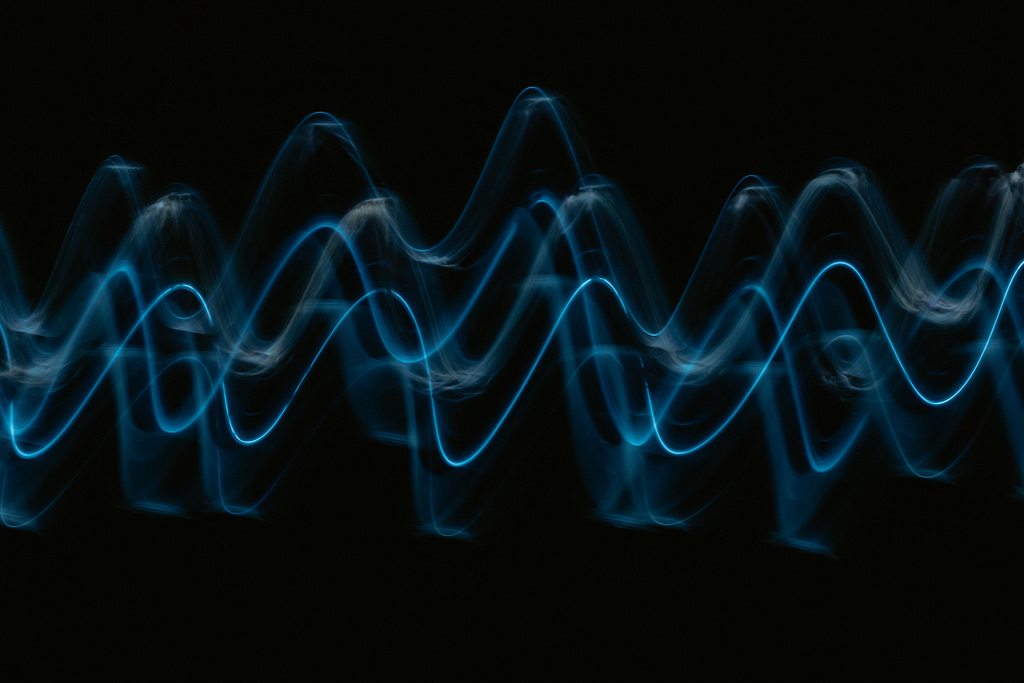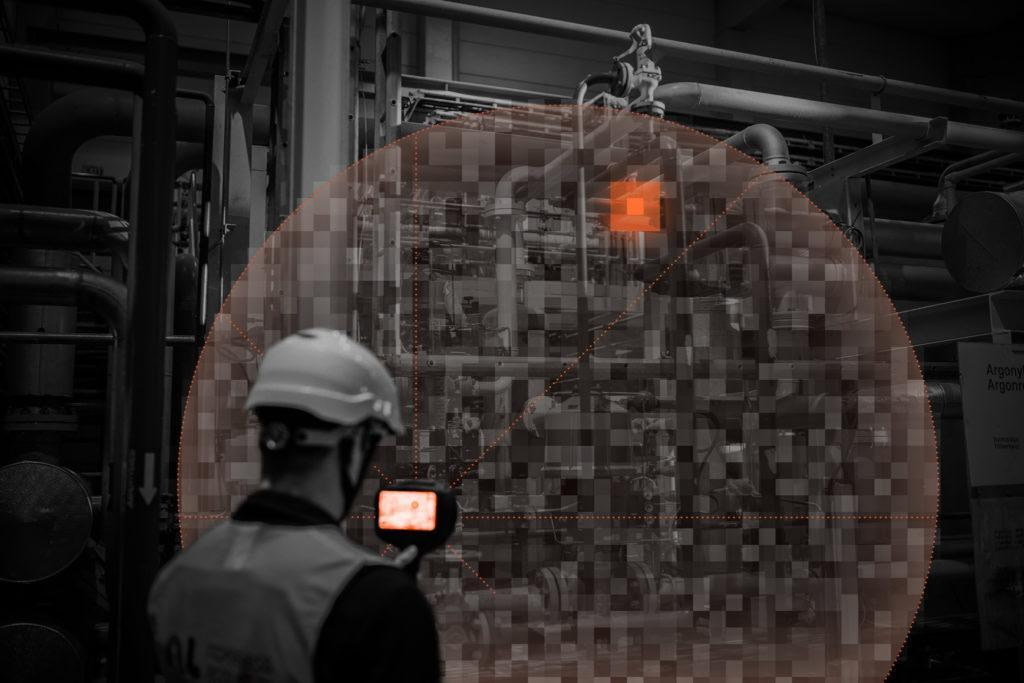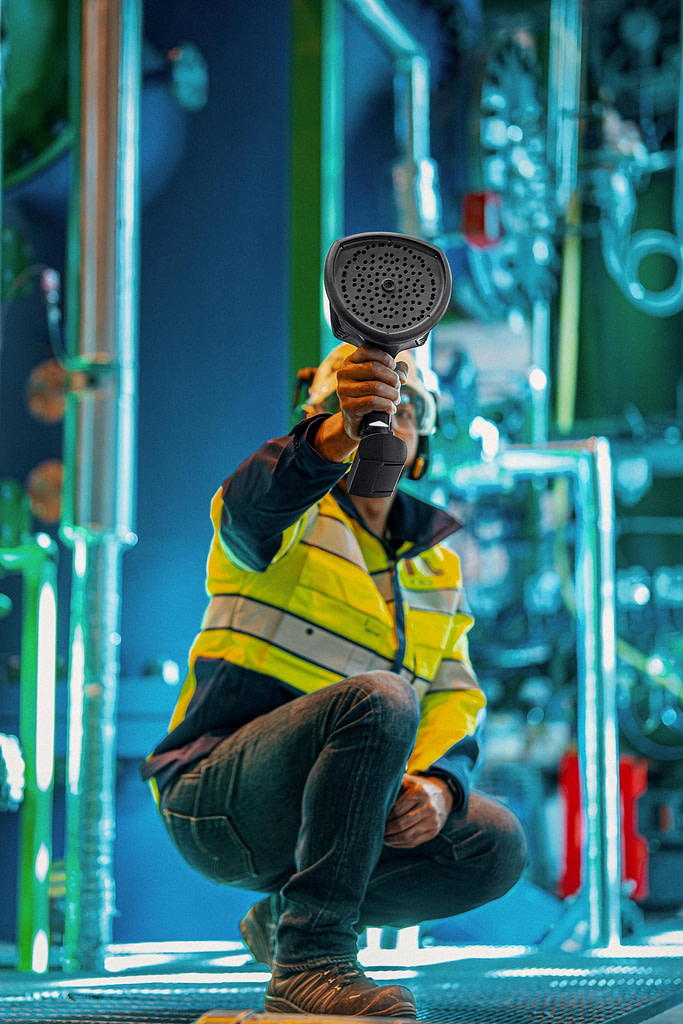Beamforming is a technique generally used in signal processing and employed by acoustic cameras to discern specific sound sources, such as compressed air leaks and partial discharges (PD). However, the devil is also in the details with beamforming, and all camera manufacturers do not utilize the technique equally well. This article gives insight into how the most advanced devices best use beamforming.

Beamforming in a Nutshell
The basic principle of beamforming is quite simple and tied to forms of energy that travel in waves, be it mechanical waves such as those in water and sound waves traveling through the air or electromagnetic waves. In beamforming, a device transmitting certain forms of waves and the signal they carry directs them toward a device receiving them, compared to having the signal disperse in every direction. Beamforming is in no way a new technique since it was introduced already in World War I by the French troops that used it in a listening device developed to detect approaching aircrafts. Beamforming was then further refined for radio antennas to focus the signal they sent in one direction and maximize its strength in relation to other sounds.
Acoustic cameras use the technique by inverting it; they reinforce the sound signals arriving at them from a desired direction and minimize sounds from other directions, often regarded as background noise. In his conference paper What Is Beamforming? (2008), Robert Dougherty defines aeroacoustic beamforming as “a method for processing microphone array data to produce images that represent the distribution of the acoustic source strength.”

The idea behind localizing sound sources with an acoustic camera relies on sound waves or sound signals arriving at different microphones in the camera’s array at slightly different times. If the sound source stays still, the sound always comes from a specific angle in regard to the camera, and thus the signal will reach certain microphones first. The other microphones in the array receive a time-delayed version of the sound signal. Summing these delays allows for calculating and determining the exact location of the sound source.
Beamforming improves the noise robustness of the microphone array, so the cameras are able to locate even quiet sounds in noisy environments, such as small leaks in paper and pulp mills. Beamforming in acoustics cameras also allows for pinpointing sound sources in a large area and from a great distance.
Optimizing the Camera Maximizes the Beamforming Results
An acoustic camera that benefits most from beamforming, such as NL Acoustics’ partial discharge and leak detection cameras, has gone through a great amount of optimization. This includes designing the microphone array’s geometry; determining the microphones’ correct number and placement in the array. Another key factor for the beamforming results is the software behind the calculations or, in other words, the computing power of the device. In the case of NL Acoustics, optimizing the cameras and fully leveraging beamforming has enabled three significant differentiating factors compared to other camera manufacturers:
- Fewer ghost sources: ghost sources are sound sources that acoustic cameras using the beamforming technique can show but that do not exist. The better the camera is optimized, the fewer ghost sources will appear.
- Better heatmap resolution: the acoustic camera locates sound sources more accurately and can calculate their sound pressure level better.
- Enhanced sensitivity: the camera detects softer sound sources in noisy environments—as already mentioned above—such as small leaks or weak partial discharges.

NL Analytics Adds to the Equation
After an acoustic camera has successfully applied the beamforming technique and accurately located sound sources, the analytics features take the spotlight. In the case of NL Acoustics cameras, the AI first helps filter out extraneous sound sources, and the device also gives relevant data on the detected sounds. When it comes to compressed air leaks, the size of the leak and an estimate of its costs are important pieces of information for deciding the most convenient maintenance plan, for example, if it is profitable to fix the leak.
In partial discharge detection, the NL Camera’s analytics shows a Phase-Resolved Partial Discharge (PRPD) pattern that depicts the activity of the partial discharge. For some, this is already enough to tell the type of partial discharge, yet even fewer know the repercussions of each PD type. For this, the NL Camera has an accompanying NL Cloud software—or separate offline software—whose AI categorizes the partial discharge type automatically, determines how severe it is, depending on its location and strength, and suggests how to resolve it.
As well as being the best-optimized acoustic cameras when it comes to beamforming, NL Acoustics’ solutions are unparalleled in their analytic capabilities and in giving users straightforward data and advice on further maintenance actions. An impressive combination that is hard to ignore!
See our case studies for real-life examples of how our clients have benefited from our leading-edge acoustic solutions.
